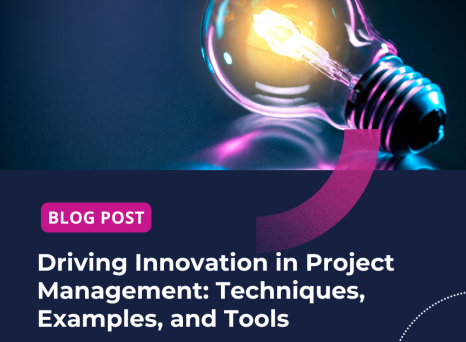Project management tools are everywhere — but let’s be honest, getting people to actually use them is another story. That’s where Elizabeth Harrin comes in. With decades of experience and a shelf full of best-selling project management books, she’s seen it all regarding work management challenges.
In her recent Planisware webinar, Elizabeth tackled one of the biggest hurdles teams face: user adoption. Understanding how to go beyond the “tick-the-box” basics is important and make these tools essential to how people work. We know that many project management tools promise to make your life easier. Sleek dashboards, automated reports, task lists for every scenario. Yet, despite the capabilities, many project management tools are collecting more space than delivering results.
It's no secret that digital transformation has reshaped how businesses operate to stay ahead, but one critical aspect often goes overlooked. Getting teams to fully embrace the tools at their disposal. While organizations invest heavily in new technologies, the success of these initiatives often hinges on one key factor—user adoption.
The human side of project management is an often underestimated factor in driving successful change within organizations. Tools and systems can improve processes, but without user engagement, even the best technology can fall flat. The solution? Building user adoption networks to ensure that employees not only understand new systems but also champion their usage.
People naturally resist change, especially when it comes to adopting unfamiliar tools. However, identifying key influencers within an organization and empowering them to advocate for new systems can make all the difference. These internal champions help bridge the gap between leadership and end users, creating a culture of trust and engagement.
User adoption networks rely on the idea that people are more likely to adopt new tools when they see peers using them effectively. Rather than relying solely on top-down mandates, organizations can foster adoption by involving employees in the implementation process and providing ongoing support. This approach shifts the focus from enforcing compliance to inspiring enthusiasm.
Common problems in project management often stem from a lack of sustained engagement. Too many organizations believe their work is done once a system goes live. In reality, adoption is a continuous process that requires ongoing effort. Teams need time to adjust, regular check-ins to address concerns, and opportunities to provide feedback.
To ensure successful adoption, organizations can follow a few practical steps:
- Start with the Why. Employees need to understand the purpose behind new systems and how these changes will benefit their daily work. Communicating the value of the tool upfront can significantly improve engagement.
- Identify Champions Early. Key influencers within the organization can advocate for change and encourage their peers to adopt new systems. These champions play a crucial role in fostering trust and promoting the tool’s benefits.
- Continuous Engagement: Adoption doesn’t happen overnight. Keeping the momentum going through ongoing training, feedback loops, and engagement activities ensures that new systems become embedded in daily workflows.
Project management today is evolving beyond timelines and key performance indicators. The focus has shifted toward following a culture of constant improvement and collaboration. Organizations that prioritize user adoption will see greater returns on their technology investments and improve overall project outcomes.
Ultimately, tools are only as effective as the people who use them. By focusing on people and building networks of engaged users, businesses can drive meaningful change and achieve long-term success.
Want to learn more? Watch our full webinar on improving user adoption and achieving project management success here.


